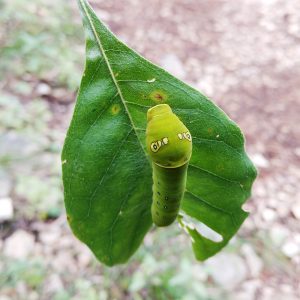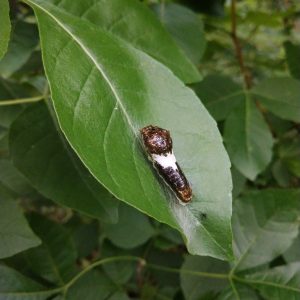With distinctive leaves and fruit, hop tree is an easy Texas native to identify — if you know what to look for.
Hidden among the underbrush around Bexar County is a rather unassuming shrub with an outsized impact. It’s known as the common hop tree (Ptelea trifoliata) and it’s a widespread plant with a native range that covers much of North America and stretches from Central Mexico all the way into Ontario, Canada.
In Texas, hop tree is generally found growing in the shade of larger trees along creeks and rivers and is a common sight along most of the Howard Peak greenway trails — if you know what to look for.
With distinctive leaves and fruit, it’s easy even for beginners to identify. Hop tree leaves have three round leaflets each that bare a resemblance to ash tree leaves, hence the alternate common name wafer ash. The fruits are flat and round, like wafers, and hang in clusters that last on the tree through the winter. (Fun fact: rumor has it attempts were made to use the fruits as a replacement for hops in brewing beer.)
Hop tree is also called skunk brush or stinking ash for the odor the leaves give off when crushed. The small yellowish-green flowers are an important nectar source in early spring, but they aren’t particularly showy.

Whatever you want to call it, hop tree is an important host plant for some beautiful butterflies. As a member of the citrus family (Rutaceae), many swallowtail butterflies, including the giant swallowtail and the two-tailed swallowtail, eat the hop tree foliage as caterpillars. These are some of the largest butterflies in our area with striking yellow and black wings.
 When they’re caterpillars, giant swallowtails camouflage themselves as bird poop to avoid predators. The two-tailed swallowtail try to blend into the leaves by being mostly green, but if a predator does spot them, they have two large eye spots on their back. These spots might confuse would be predators into thinking the caterpillar is watching them even though they aren’t.
When they’re caterpillars, giant swallowtails camouflage themselves as bird poop to avoid predators. The two-tailed swallowtail try to blend into the leaves by being mostly green, but if a predator does spot them, they have two large eye spots on their back. These spots might confuse would be predators into thinking the caterpillar is watching them even though they aren’t.
Both species have one final defense mechanism, a stinky gland called an osmeterium that they can project. So, try not to touch them unless you want to get caterpillar stink on your hand.



